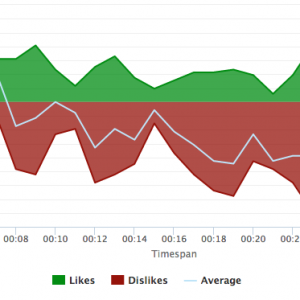Top 5 Practices for Improved Ad Testing
Involving your company in advertising is a bold move to do, mainly because it requires you to invest a lot of time, money, and effort into it. Being a venture needing high stakes, you must make sure you make the right moves and decisions not to waste your efforts. This is where advertising testing comes in to help you and your company make calculated and data-driven decisions.
Advertising testing can be done by putting your advertising concepts out towards a representative sample. Doing this can enable you to ensure that you get to exhaust all of the possible returns from your investment. After all, no company wants to fail and deliver terrible ads that can bring irreparable damage to them.
We are here to help you avoid failing in an aspect of brand tracking that is considered one of the most expensive portions of the business plan. This article will provide a list of the five best practices to help you improve your ad testing.
1. State what you want to achieve.
The best first step in everything, most especially when it comes to advertising, is determining what you want to achieve. Define your goal by identifying what you want to happen for your brand. This practice is highly crucial in brand tracking, specifically in testing your advertising because it is vital to have a clear image of what success must look like for you.
A company’s goal in its advertisements may come in different ways. For one, it can be in the form of increasing the sales of your existing product lines. It can also be to raise awareness of their brand or to promote themselves. Whatever the goals of the brand may be, make sure that you understand clearly what those are.
2. Test your campaign before, during, and after the launch.
As mentioned, ads that do not go through advertising testing often fail and do not produce our desired results. This is why you must allow your campaign to go through pre-testing. It will enable you to make sure that your brand starts on the right note, but it will also help you avoid all the possible pitfalls.
Moreover, it will also be best for you to monitor your ads during their launching. It will help you see how well it is doing throughout its entire duration and identify the periods when the conversion was relatively high. By closely observing this phase, you can also keep track of how purchase decisions change as your ads continue to run.
You can test an ad concept for your brand by working with a segment from your target audience. This pre-selected segment must be a group that represents the group you are eyeing to target for your ad campaign. After identifying the people who belong to this segment, you can survey to see how each group member will react to the campaign.
3. Experiment and adapt.
In the business landscape’s current situation, change is always constant, and something that might have worked before may no longer be applicable today. Because of this, brands should learn to be flexible and quickly adapt to these changes. Advertisers need to conduct advertising research and continuously experiment to keep up with what works best to reach the public that will optimize ads better.
There are types of advertisements that still work despite how long brands have practiced them. For example, those that have longer durations still work efficiently in introducing and building a brand. However, as the consumers’ attention span decreases over time, it will be best for brands to adapt by creating ads with shorter video formats to retain their attention.
Another way to experiment and explore what you can do for your brand is by thinking of the most pressing questions you can help address. Doing this will help you see what works best for your brand and what does not. Do not be afraid to try out new things, as it will pave the way for you to see where you will fit best.
You can also invest your attention towards playing with various ad lengths and exploring different types of logo placements. Alongside incorporating different kinds of music into your ads, all these can collectively help you adapt and evolve with your consumers.
4. Explore varied ad lengths.
As mentioned in the previous section, brands can explore different ad lengths and choose the one that works best for them. Considering all of your options will help you see which type of video tactic will help you succeed in gaining your viewers’ attention. You can choose between ads that last either for 30 seconds, 15 seconds, 6 seconds, or even no ads at all.
After trying out and exploring all these ad lengths, you will be able to determine which ad formats produced the best key performance indicators. These KPIs come in the form of brand recall, brand awareness, and product interest.
5. Know when to use a single ad test (Monadic Testing) or multiple ad test (Comparison Testing).
Though there are several methodologies in testing your ads, the most common ones are monadic and comparison testing. Monadic surveys tend to be shorter(only evaluate one thing), and likely to reduce relational bias – where respondents compare things they see in the survey against each other. Over the long term, monadic testing also provides value because you can compare old ads vs. new ones. Comparison surveys tend to be longer, however, they’re less expensive (requires fewer respondents) if you’re simply looking to compare several things against each other, and not too focused on using the data for future analysis.
Consider all these factors and identify which one is better for you and your brand.
Conclusion
Advertising testing is an excellent way to arrive at better ad results for your brand. It will enable you to avoid all possible pitfalls and arrive at your desired results in no time. Advertising might be a daunting task, especially for beginners, but the practices we have listed above are a good number to help you get started.







